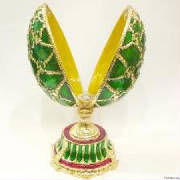The following is
the old Common Application Short Answer question that existed until 2012. We are preserving this section on the website
because the writing tips here remain relevant to some supplemental questions, even if the Common App Short Answer question
itself has be discontinued.
.
Please briefly elaborate on one of your extracurricular
activities or work experiences in the space below or on an attached sheet (150 words or fewer).
.
Some comments and suggestions:
.
1.
The 150 word limit demands radical brevity in your response.
.
Unfortunately, the Common App is not kidding about its absurdly tight word limit, which limits students
to just a few sentences or a short paragraph. Until just a few years ago, students were able to upload
much longer essays, but since 2008, the Common App has modified its computer program to accept only about 1000 characters,
which translates into essays of approximately 150—175 words depending on word length.
.
(As an illustration of how short a response of 150 words is, in
section 3 below, the mere six sentences that lie between the two black boxes [■] comprise 163 words/994 characters,
a length which would just about max out the online box.)
.
2.
Write about something that means something to you.
.
This may seem like an obvious point, but many applicants write about things that they imagine the colleges “want
to hear” as opposed to what the applicants really believe. Don’t kid yourself, though: a phony
essay is like a fake smile—both obvious and unconvincing.
.
Be sincere. No one
likes a phony. If you write well about something that means something to you, it will mean something to
the reader. This point was confirmed by the Yale admissions dean, who told me, “Tell your students
to write from the heart and not to worry too much about what we think. Tell them to just go for it.”
(Naturally, this point about writing sincerely applies to all college essays, and not simply to the short
answer.)
.
3.
Write on an entirely different topic from the one you choose for the main
essay.
.
[■] For the Common App, you have to write at least two essays, the first
about a significant activity and the second (longer one) on a topic of your choice. It is conceivable that
the same topic could qualify as the subject of both essays—for instance, a swimmer might consider writing about swimming
for the Short Answer and about the swim coach for the influential person essay. Although two fine essays
might result, such an approach is not usually advised because the reader’s perspective of the student will probably
not extend beyond the narrow range of the swimming pool.
.
Certainly you have other things going on in your life
that you can talk about. People are complex:
by the time you are seventeen, you have experienced a great deal—different personalities, places, emotions, defeats,
challenges, victories—so you should use these two essays to write about two (or more) strikingly different aspects of
your life. Additionally, diverse subject matter also suggests well-roundedness, a [■!] quality that
colleges value highly.
.

1.
Write about something with which you have substantial experience
.
This is
true for two reasons: first, people cannot competently write about an activity unless they can provide the concrete detail
that produces a vivid and compelling essay. After all, one cannot convincingly describe something that
one has never seen.
.
Second,
without enough experience, writers will fail to convince the reader of their sincerity. For instance, if
a student has been doing something for only a few weeks, or for only one hour per month, how can the reader believe that this
is the most meaningful thing in the student’s life?
.
.
2.
Stay away from the usual clichés about your chosen activity.
.
A big weakness
in many application essays is the stunning lack of originality in the language or perspective. For instance,
essays about favorite sports are often rendered dull and tedious (and therefore useless) by trite statements like these: “It
is from football that I learned that hard work pays off…”; “After all the blood, sweat and tears, I learned
the importance of discipline…”; “I learned that if I put my mind to it, it is mind over matter, and that
I can learn to overcome obstacles…”; “From Coach, I learned the importance of teamwork…”;
“My teammates were always there for me…”
.
If you wish to express anything resembling the above ideas, you absolutely
must find more original ways to say them—otherwise they will smell like dreary platitudes; another solution
is to touch these themes only lightly and emphasize the more FUN and lively physical aspects of the sport or activity (See
section 6 below).
.

1.
Don't attempt to say everything about your topic—decide
upon a limited and original focus and work in from there.
.
A temptation facing all applicants is the temptation to try to address
everything about a given topic. This is an understandable impulse—there is so much to say, after
all—but resulting essays are usually too general, lacking in specific detail, and dull. Essays that try to be about
everything usually end up being about nothing.
.
In essay writing, as in portrait photography, it is better to get in
close to your subject so that you can focus on a single important thing and include only the most relevant and expressive
details.
.
.
2.
Focus on one aspect of your activity and mine it for gleaming details.
.
Especially
when one is faced with a very short word count (such as 150 words), it is often better to set a limited and original focus
and work in from there. Examples of a pinpoint focus are the following (some of which are drawn
from former student efforts):
.
Regarding soccer, 150 words on the special beauties of playing in the rain;
.
Regarding track, 150 words on sprinting around a banked curve with racing spikes;
.
Regarding gymnastics, 150 words on the free-flying moment of dismount or the very specific
joy of sticking a perfect landing;
.
Regarding
chess, an essay on the characters and virtues of individual pieces, or even just a single piece: the audaciously leaping
and L-hopping knight; the sly and oblique bishop; the radiant but overexposed queen; the no-nonsense cannon of a rook that
can go booming down a whole file; the indispensable but slow-moving king, horseless or hamstrung; the humble but stubborn
pawn, who has the Cinderella seeds to become queen…
.
Regarding guitar, an essay on the deafening joy of—when the parents
are out—cranking up the amp to, yes, eleven (thank you, Spinal Tap)—and crunching out massive, house-shaking
chords (E, A, B—all major chords, no minors, no major sevenths or other pretty stuff) until the neighbors come banging
on the doors…
.
Regarding fishing, an essay addressing the satisfying buzz and whirr
of the reel as the baited hook and line, weighted by the leaded tear-drop of a sinker, flies out from the power of a cast,
flung far into the warm summer night…
.
As you go further into the imagery and into the depth of the detail, you will begin to see the possibilities
of thematic associations, internal harmonies and symbolism. For instance, in the fishing example above,
it is fairly easy to see how a meditation on the thrill of a new cast (a thrill that is repeated after every reeling-in and
re-baiting) can begin to suggest the themes of optimism and starting over—not that you would even need to go in that
direction (and indeed shouldn’t if the sentiment, especially in its rendering, were forced or cliché).
But the possibilities are there, to be explored or passed by at your discretion.
.
In short, a useful way to
think about the Short Answer (as well as the Personal Statement) is as an example of the miniaturist’s art: something
that makes a clear distinct statement from a distance but that also has vivid, striking details that satisfy the viewers who
take the time to look closely, like museum patrons examining a Fabergé egg.
.